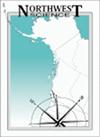Spatiotemporal Responses of Wintering Bald Eagles to Changes in Salmon Carcass Availability in the Pacific Northwest
IF 0.5
4区 环境科学与生态学
Q4 ECOLOGY
引用次数: 1
Abstract
Abstract Each winter, thousands of bald eagles (Haliaeetus leucocephalus) from across western North America migrate to Pacific Northwest rivers to feed on the carcasses of post-spawning chum salmon (Oncorhynchus keta). However, declining salmon populations and impacts of climate change are reducing the availability of salmon carcasses as a wintering food source for eagles. The ability of eagles to adjust to these impacts is crucial to their survival, and their responses are currently unknown. I hypothesized that eagles are responding by redistributing to non-river habitat in search of alternative food sources. Specifically, I examined the redistribution of over-wintering eagles from river habitat to nearby agricultural areas in response to seasonal declines in carcass availability. Over two consecutive winters, I conducted weekly eagle surveys on a 30-km stretch of the Nooksack River and a 22.5-km stretch of farmland northwest of the river. I examined the association between salmon carcass distribution and eagle abundance on the Nooksack River, and evaluated the temporal relationship between eagle abundance on the Nooksack River versus neighboring farmland. I found a strong negative association between eagle abundance on the river versus adjacent farmland, and observed eagles primarily concentrated near dairy farms and waterfowl rafts. My results suggest that eagles are responding to declining carcass availability by redistributing to non-river habitat in search of alternative food sources, and that a substantial fraction may migrate to agricultural areas.太平洋西北部越冬秃鹰对三文鱼尸体可利用性变化的时空响应
摘要每年冬天,来自北美西部的数千只秃鹰(Haliaeetus leuccephalus)都会迁徙到太平洋西北部的河流中,以产卵后的鲑鱼(Oncorhynchus keta)的尸体为食。然而,鲑鱼数量的减少和气候变化的影响正在减少鲑鱼尸体作为鹰越冬食物来源的可用性。鹰适应这些影响的能力对它们的生存至关重要,目前尚不清楚它们的反应。我假设鹰的反应是重新分布到非河流栖息地,寻找替代食物来源。具体来说,我研究了越冬鹰从河流栖息地到附近农业区的重新分布,以应对尸体供应的季节性下降。在连续两个冬天里,我每周都会对诺克萨克河30公里的河段和该河西北22.5公里的农田进行鹰类调查。我研究了诺克萨克河上鲑鱼尸体分布与鹰丰度之间的关系,并评估了诺克萨克河上鹰丰度与邻近农田之间的时间关系。我发现河上鹰的数量与邻近农田之间存在强烈的负相关,并观察到鹰主要集中在奶牛场和水禽筏附近。我的研究结果表明,鹰正在通过重新分配到非河流栖息地寻找替代食物来源来应对尸体供应量的下降,其中相当一部分可能会迁移到农业地区。
本文章由计算机程序翻译,如有差异,请以英文原文为准。
求助全文
约1分钟内获得全文
求助全文
来源期刊

Northwest Science
环境科学-生态学
CiteScore
1.30
自引率
0.00%
发文量
23
审稿时长
>36 weeks
期刊介绍:
The pages of Northwest Science are open to original and fundamental research in the basic, applied, and social sciences. All submissions are refereed by at least two qualified peer reviewers. Papers are welcome from authors outside of the Pacific Northwest if the topic is suitable to our regional audience.
 求助内容:
求助内容: 应助结果提醒方式:
应助结果提醒方式:


